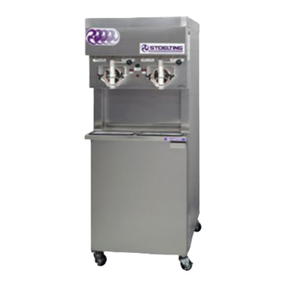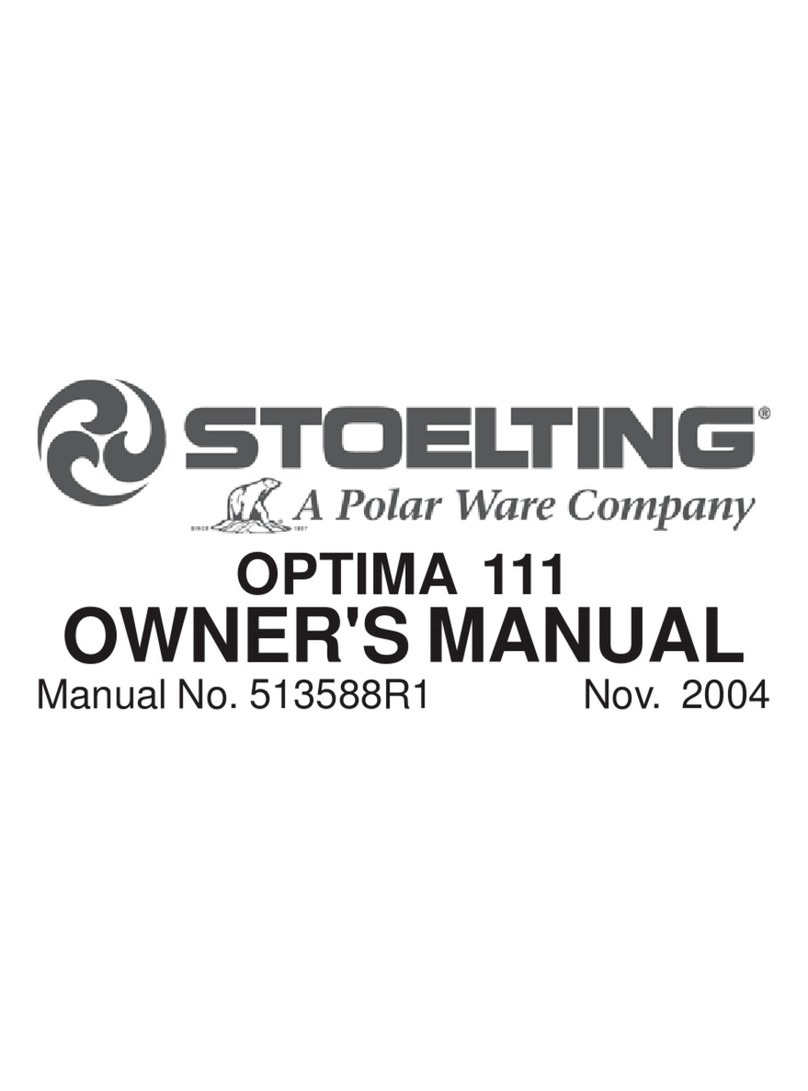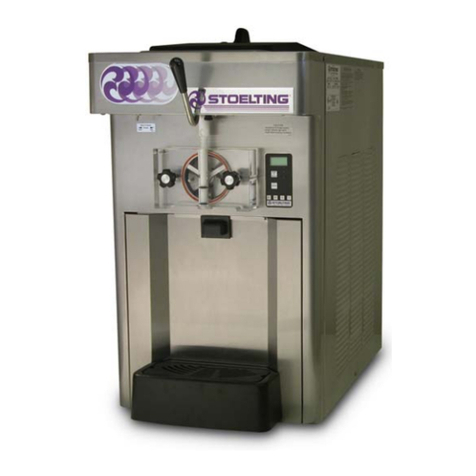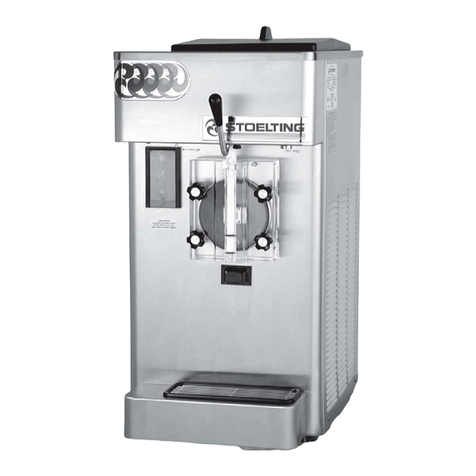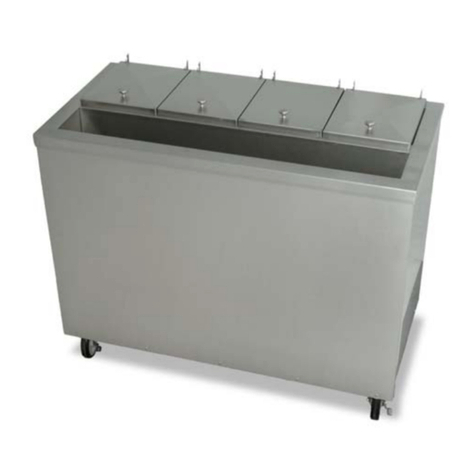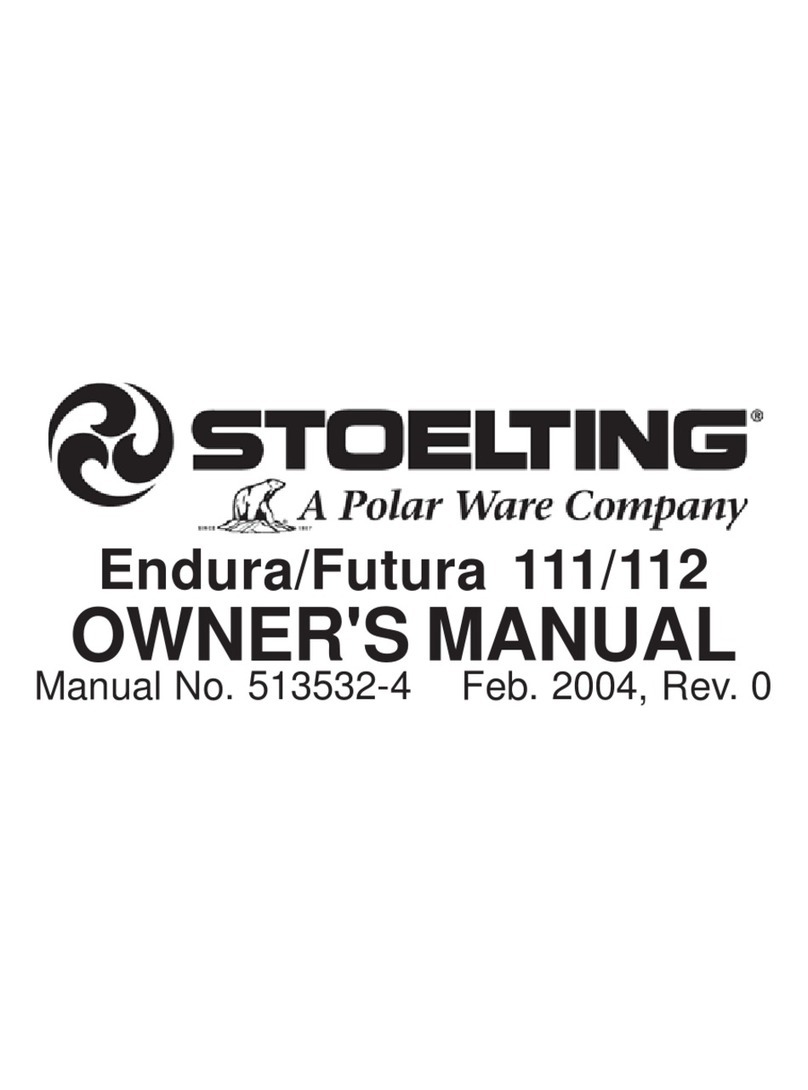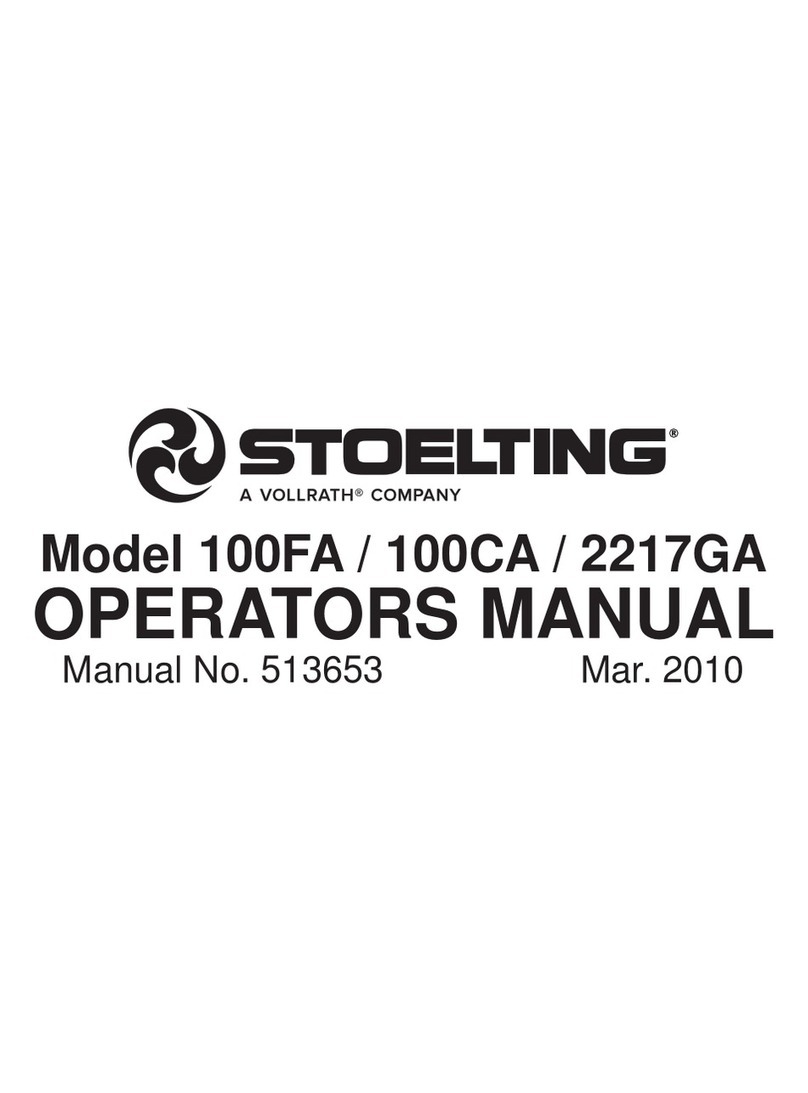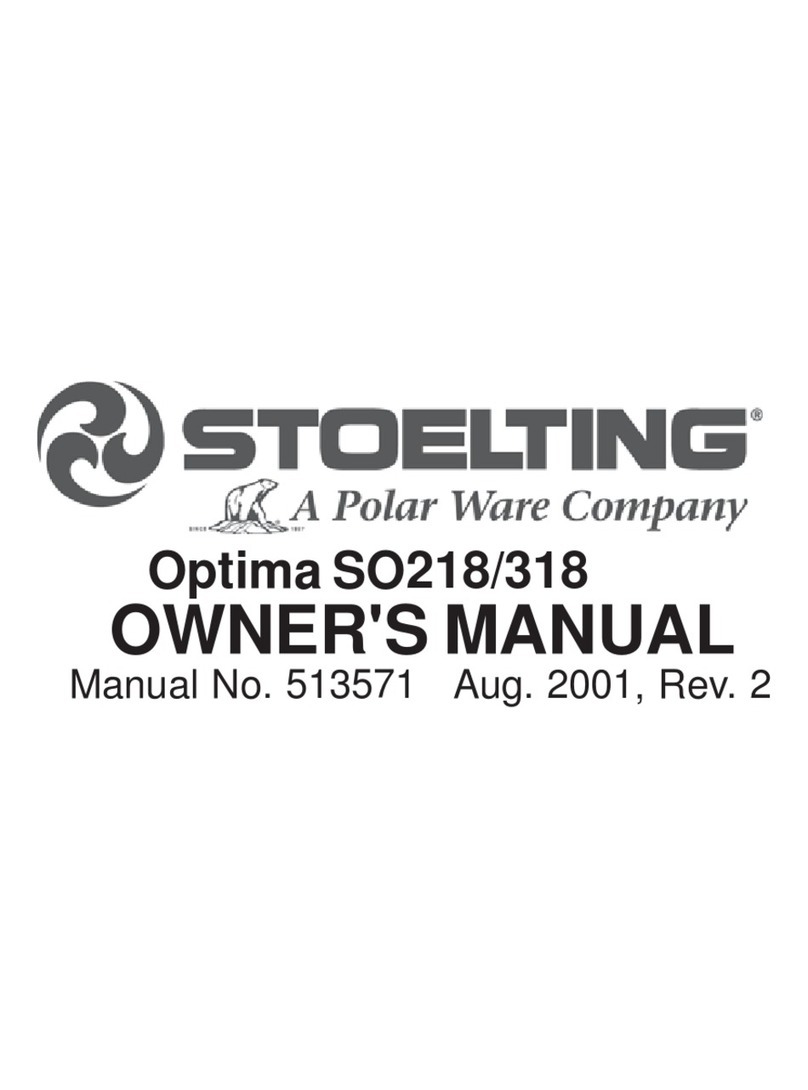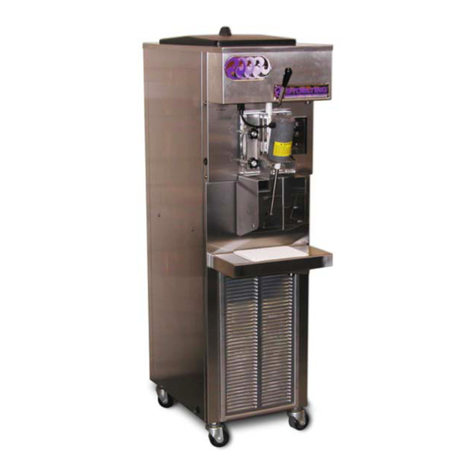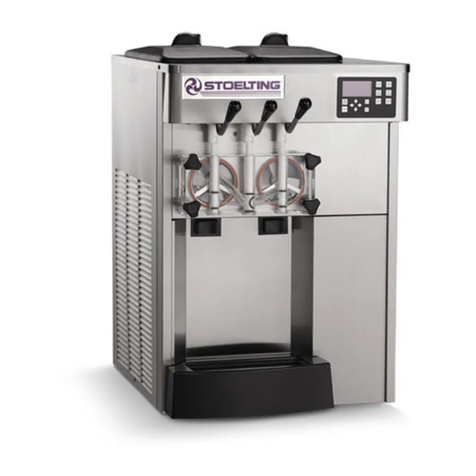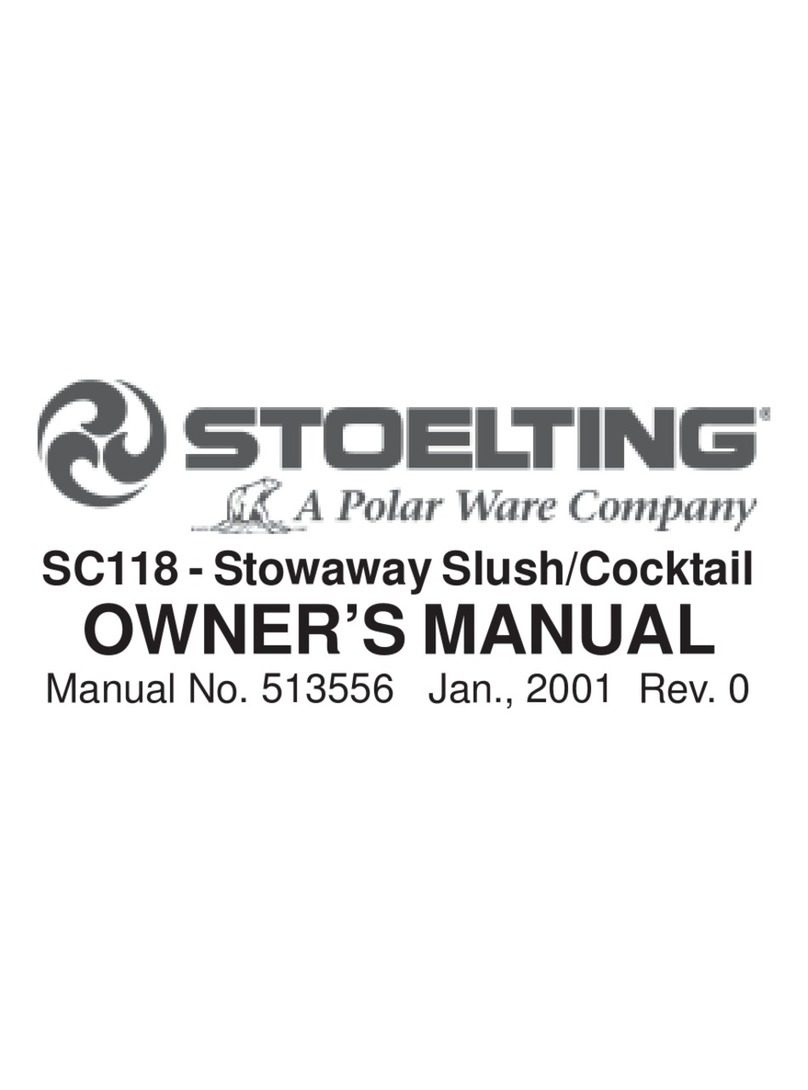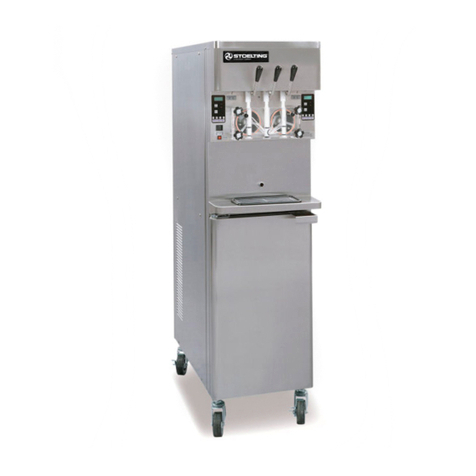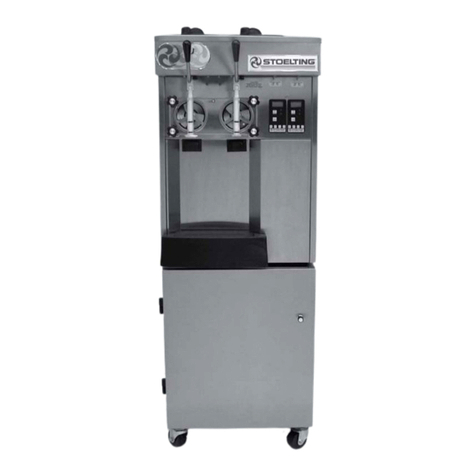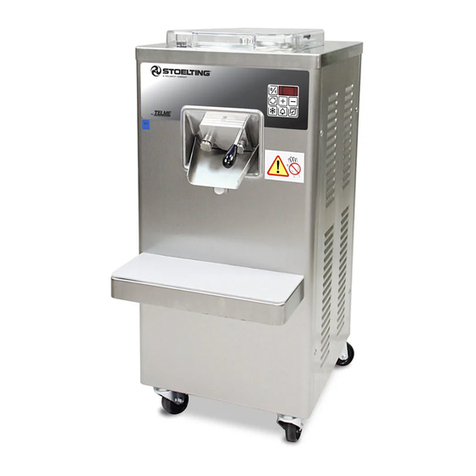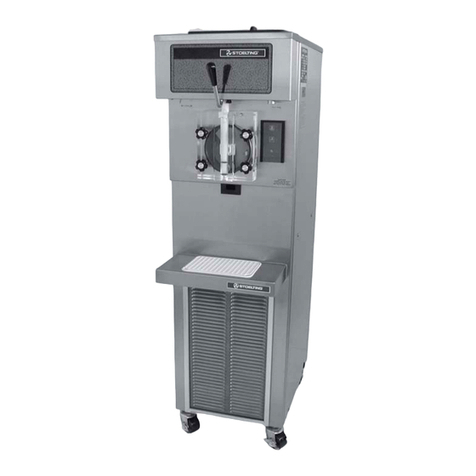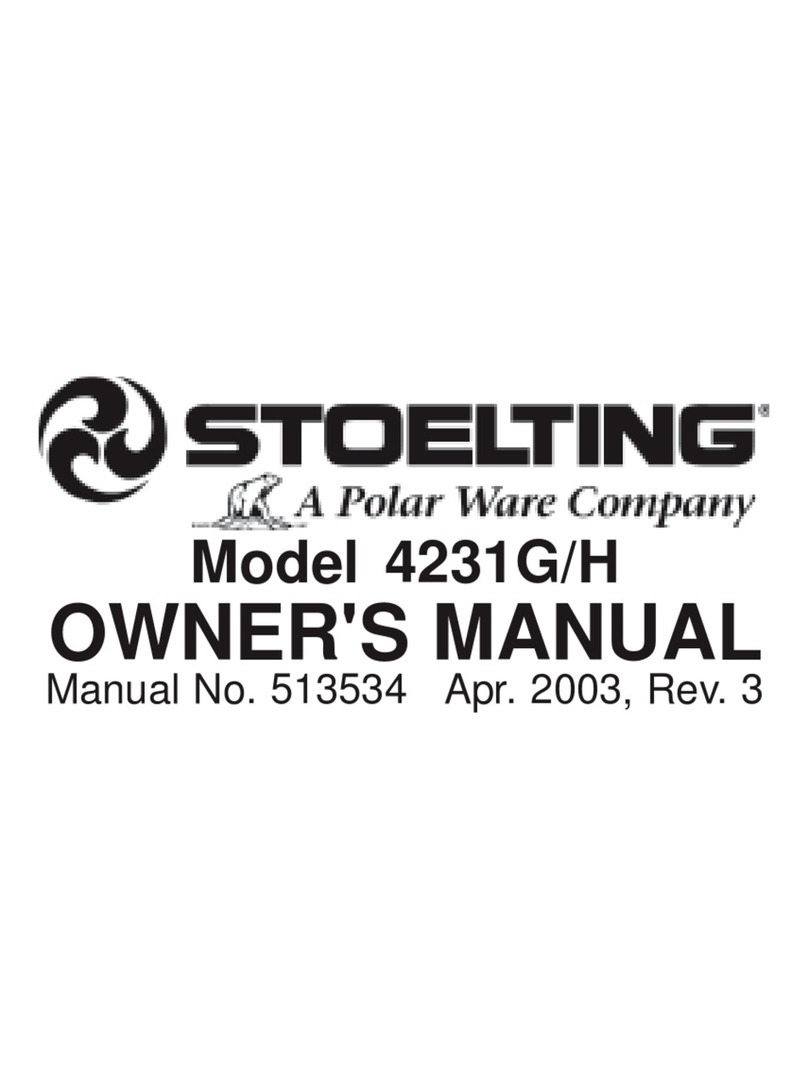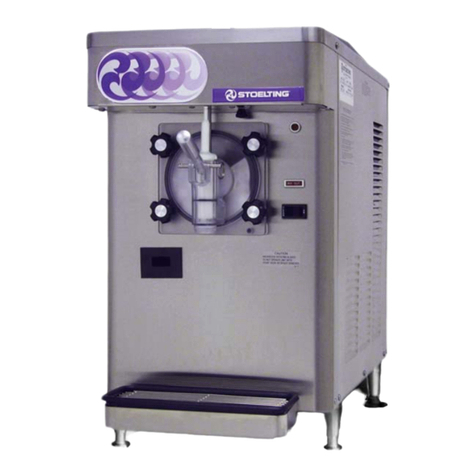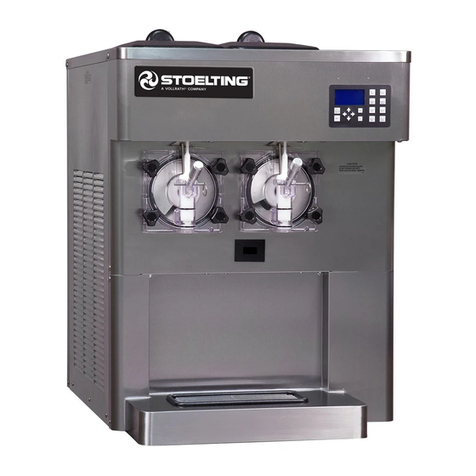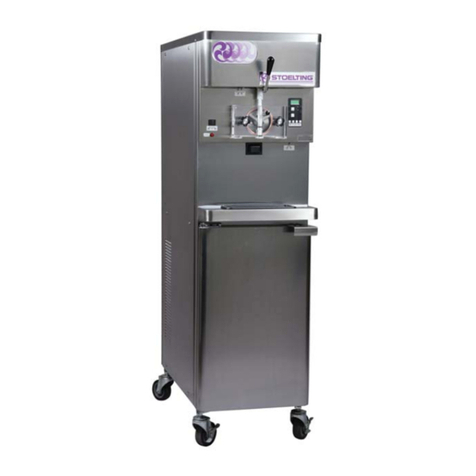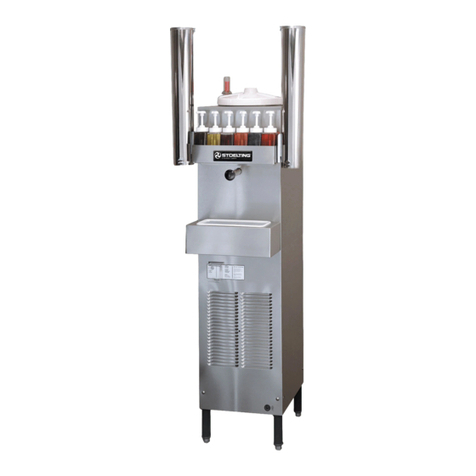
TABLE OF CONTENTS
Section 1 .............................................................................................................. 1
1.1 Description.............................................................................................. 1
1.2 Specifications.......................................................................................... 2
Section 2 .............................................................................................................. 3
2.1 SafetyPrecautions .................................................................................. 3
2.2 Shipment &Transit .................................................................................. 4
2.3 FreezerInstallation................................................................................... 4
2.4 Installing PermanentWiring...................................................................... 4
2.5 Mix Pump ................................................................................................ 5
Section 3 .............................................................................................................. 9
3.1 SafetyPrecautions .................................................................................. 9
3.2 OperatingControls andIndicators............................................................ 9
3.3 ImportantInformation RegardingCleaningandSanitizing......................... 11
3.4 Disassemblyof Freezer Parts.................................................................. 12
3.5 Cleaning Disassembled Parts ................................................................. 13
3.6 SanitizeFreezerParts ............................................................................. 13
3.7 Cleaningthe Freezer ............................................................................... 14
3.8 AssemblingtheFreezer........................................................................... 14
3.9 Sanitizing ................................................................................................ 16
3.10 InitialFreeze downandOperation............................................................ 16
3.11 MixInformation ........................................................................................ 17
3.12 OperationofMix Pump ............................................................................ 18
3.13 MixPump Cleaning ................................................................................. 18
3.14 Disassemblyand InspectionofRemovable Parts..................................... 18
Section 4 .............................................................................................................. 21
4.1 Freezer Adjustment ................................................................................. 21
4.2 ProductTemperatureAdjustment ............................................................. 21
4.3 OverrunAdjustment ................................................................................. 21
4.4 Mix PumpHoseReposition ..................................................................... 22
4.5 MixPump HoseReplacement.................................................................. 22
4.6 CabTemp.Adjustment............................................................................. 22
4.7 DriveBeltTensionAdjustment.................................................................. 22
4.8 Condenser Cleaning(Air Cooled Freezers) ............................................. 23
4.9 PreventativeMaintenance........................................................................ 23
4.10 ExtendedStorage ................................................................................... 23
4.11 Troubleshooting ....................................................................................... 24
Section 5 .............................................................................................................. 29
5.1 How toOrderReplacement Parts ............................................................ 29
5.2 PartsLists and ReferenceDrawings........................................................ 29
